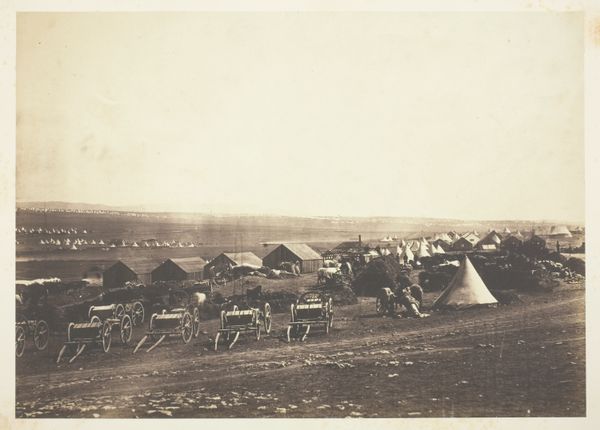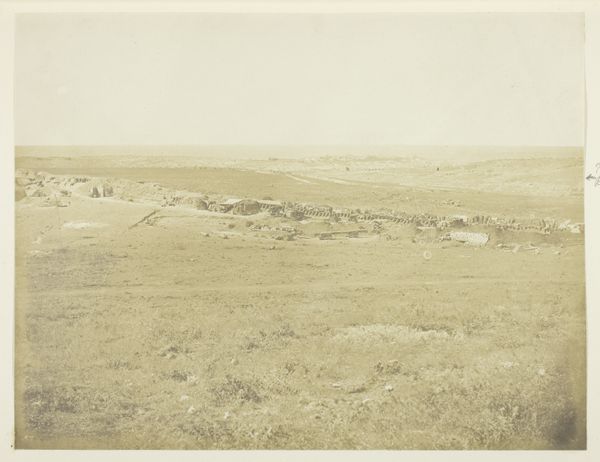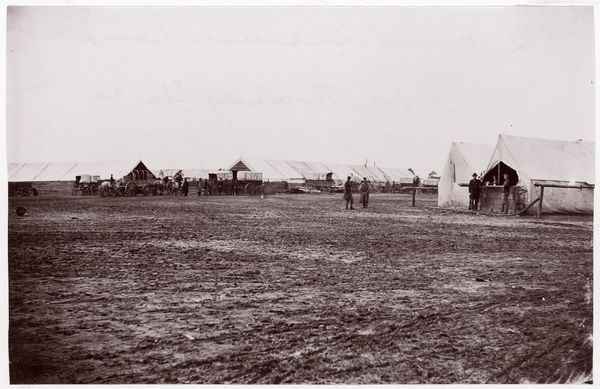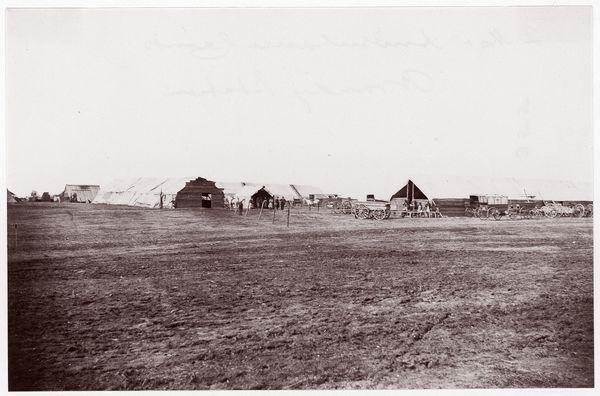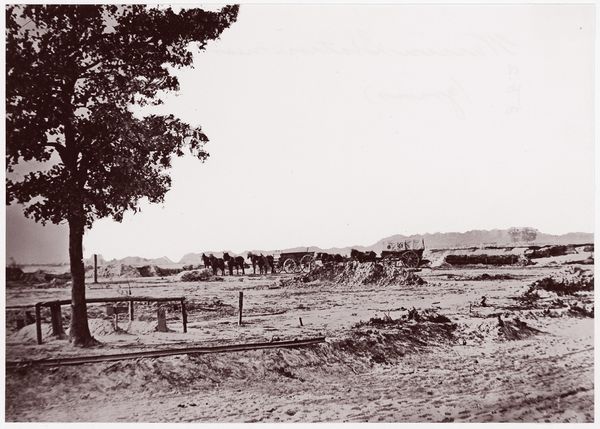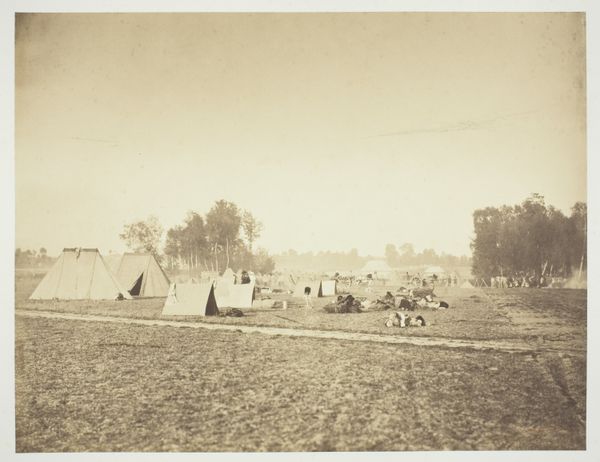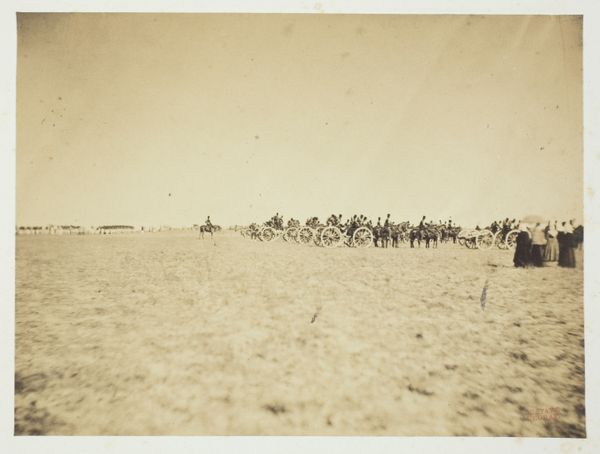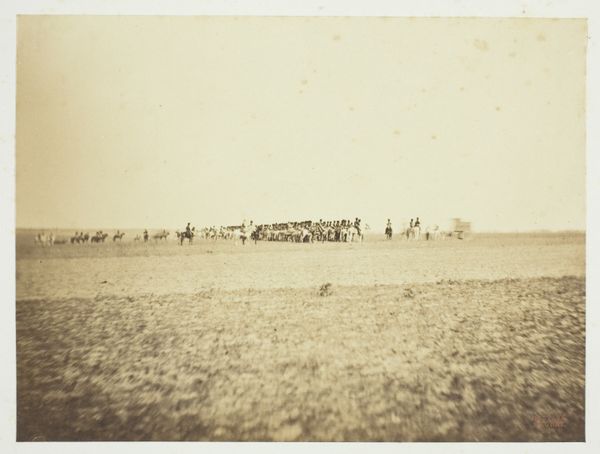
print, photography, photomontage, albumen-print
#
16_19th-century
# print
#
war
#
landscape
#
photography
#
photomontage
#
history-painting
#
albumen-print
Dimensions: 24.5 × 35.7 cm (image/paper); 40.5 × 53.2 cm (mount)
Copyright: Public Domain
Editor: Here we have Roger Fenton's "Plateau of Sebastopol," an albumen print from 1855, now residing at The Art Institute of Chicago. I'm immediately struck by the emptiness of the landscape. What was once a battlefield is reduced to this somewhat desolate expanse, dotted with tents. How do you interpret the imagery here? Curator: The desolation you perceive is key. But look closely, isn't it interesting how the supposed reality of photography is deployed in service of a deeply mediated message? This isn't merely a record; it’s a carefully constructed narrative. War, traditionally depicted through grand history paintings filled with action, is presented here through absence. Consider the title: Plateau of Sebastopol. Why "plateau" and not, say, "battlefield?" It suggests a stage, an aftermath, almost theatrical in its staging. What do you make of the horse and rider, positioned centrally? Editor: They definitely command attention, acting almost like figures in a classical history painting, yet strangely still and detached. I suppose that adds to the emptiness, contrasting with the heroism usually associated with such scenes. Curator: Precisely! Fenton, working for the British government, aimed not to shock with gore but to manage public perception of the Crimean War. The emptiness isn't accidental; it’s a symbol. What emotional impact does that hollowness create? What remains after conflict, both physically and psychologically? Editor: It really underscores the lingering silence and loss, more powerfully, perhaps, than images of direct combat ever could. Curator: And that is precisely how visual symbols, particularly through careful absence, shape cultural memory. It leaves us with haunting questions, about the true cost of conflict, far beyond immediate casualties. Editor: That makes perfect sense. I was focused on the stillness, but I see now how that stillness is intentionally loaded with cultural meaning and questions about historical representation itself. Curator: Exactly. And hopefully it sparks more.
Comments
No comments
Be the first to comment and join the conversation on the ultimate creative platform.
